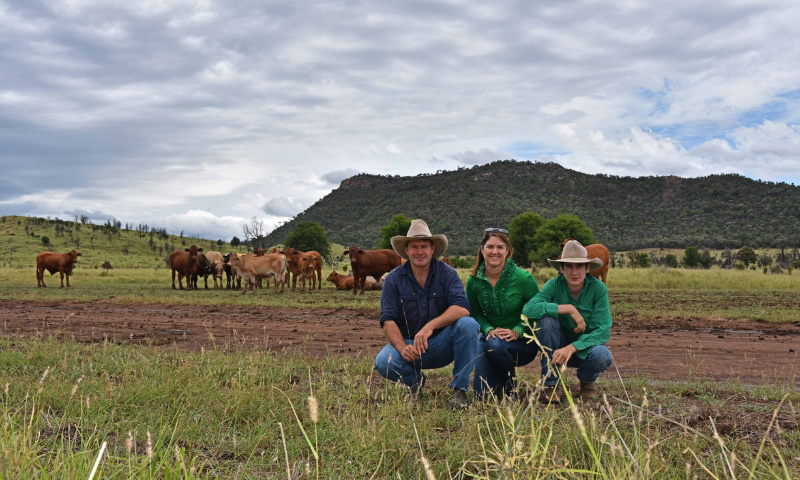Central QLD Organic Grass Fed Beef Business Decisions & Customer Trends
Product Range: MegaMin USDA/NOP Organic Supplements
Region: Injune, QLD
- Overcoming mineral deficiencies
- External parasite control
“A few tough years of drought and low commodity prices made us reassess our management approach. We knew we had a good product and decided to change focus and chase the premium market for our cattle. In the end the organic market was a good fit for our business. We don’t have ticks or parthenium and have always raised grass fed cattle. Certain inputs, however, such as HGPs, Urea and dehorning powder were no longer able to be used.
Previously we were a backgrounding operation so the organic transition also meant we had to reduce our breeder numbers to be able to take the progeny through to slaughter weight.”
The Price family run 1100-1200 breeders on properties around Injune and grow and fatten their own cattle with numbers dictated by the season. The Prices continued, “85% of our cows bring a calf to the yards at branding time and we cull our dry cows. As a certified BMP Grazing operation we have a strict focus on conservative stocking rates to ensure our ‘feed budget’ gets us through to January. We’re certainly not afraid to sell dry cattle to preserve our pastures in order to always have feed in front of us. Fortunately, we are in a good spot for rain which makes planning a lot easier than other producers have it.”
“Going organic across all of our properties was a business decision for us, but it meant we had to look to different inputs for our livestock”.
When AgSolutions asked Owen “Why do you use MegaMin Minerals?”, Owen’s reply was “Why not!”
“We’ve used the MegaMin USDA/NOP supplements for many years and quickly switched to the Extra 10% Sulphur option when it was launched. Minerals are a cheap insurance for us and provide an easy tool, especially in our forest country. Mineral deficiencies in our cattle can otherwise be a limiting factor and MegaMin takes care of that. Energy and protein gaps are expensive to correct so we aim to avoid these situations and manage through grazing and decision making which is influenced by environment and rainfall. We are producing heavier cattle and try not to push our country. We aim to not to create a drought here so it’s only in the bad seasons like this year when we don’t get rain by the second week in January that we are really impacted.”
Owen and Brigid are continually montoring what the consumer wants, hence Grass Fed – Organic – Hormone and Antibiotic free is where they’ve positioned their operation to respond to these changing customer trends.
The MegaMin Extra Sulphur has been a massive benefit in such a tough dry year. The lick is doing what it’s designed to do and it helps us to manage lice and buffalo fly as well. There is an animal welfare aspect these days with fly and sulphur solves that for us. When we first trialled the lick three out of four paddocks got the additional 10% sulphur and the next time we had the cattle in the yards, the benefits were obvious. The cattle in the three paddocks with sulphur looked great and the fourth paddock had cattle covered in fly. I’d say there was a 90% decrease in fly numbers in the additional sulphur paddocks. Driving around we can tell if the cattle are out of lick before we get to the lick feeders just by a visual inspection of the fly numbers. Within 7-10 days the fly numbers increase when the cattle are out of the MegaMin USDA/NOP Extra Sulphur.”
